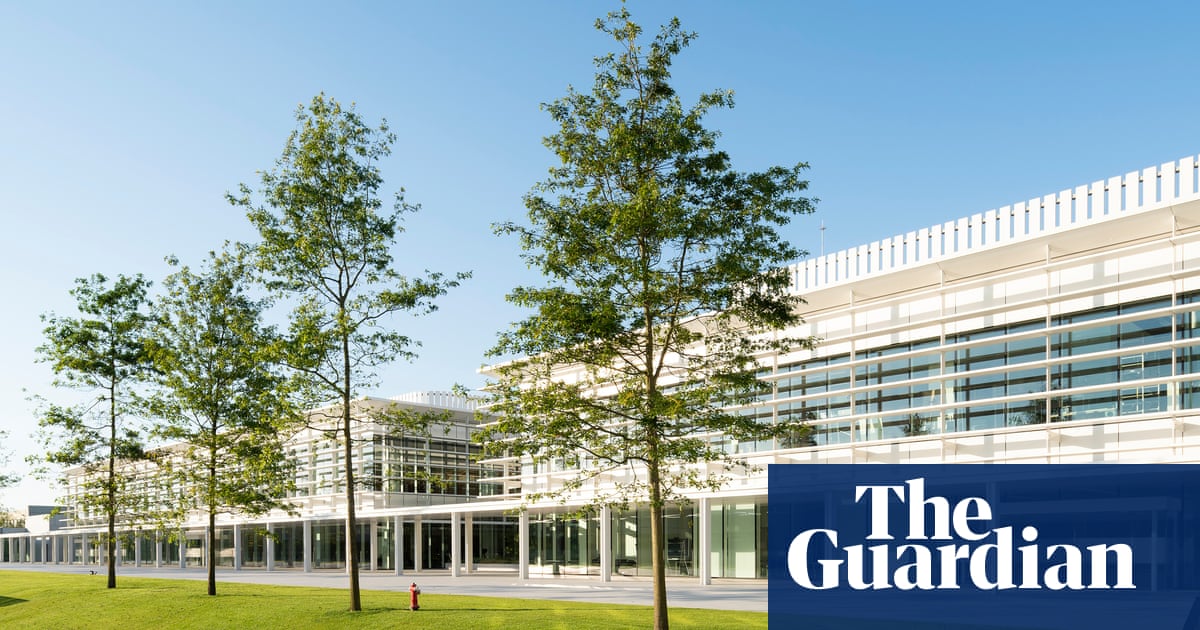In Arteixo, northern Spain, workers are putting the final touches to a gigantic white box of a building, fixing windows and planting greenery in the new global headquarters of the fashion brand Zara, which turned 50 this year.
The site, complete with a private high street where the retailer will test out its latest store concepts, is not far from the small store on the corner of a nondescript street in the centre of nearby La Coruña where, in 1975, Amancio Ortega opened his first fashion store.
From those humble beginnings grew Inditex, a fashion empire that today boasts seven brands including Zara, Massimo Dutti, Bershka, Pull & Bear and Oysho. It has more than 5,500 stores in 98 countries and an online presence in 116 more – from the US and UK to Zimbabwe and Uzbekistan.
Zara, which has been worn by the Princess of Wales, Taylor Swift and, controversially, Melania Trump, was the first brand in the group and remains by far the biggest. It is budget friendly but not super cheap, drawing in shoppers with affordable tailoring and on-trend items, especially dresses – most famously the 2019 polka dot viral dress.
Ortega, who at 89 is still regularly seen at the head office chatting with staff, was a local clothing manufacturer who had worked his way up from being a delivery boy at a shirtmakers when he opened his first shop. He is now the 12th richest person in the world according to Forbes, with a net worth of about $120bn (£880m).
More than 160,000 people work for the company he founded, more than 5,000 of them at the Inditex HQ in Arteixo, a complex which includes the new, soon to be opened Zara head office. Together they helped ring up sales of €38.6bn (£33.3bn) last year and profits of €7.6bn.
As the Guardian was given rare access to the building’s gleaming white corridors, staff whizzed past on electric scooters or even bikes to navigate the vast site.
But as the company hits middle age, Inditex faces challenges. Sales growth slowed to 4.2% in the most recent quarter, a slowdown from 10.5% in the previous quarter.
Like many other retailers, the company is reducing its overall store estate – with a net 136 stores closed in the past year.
The slowdown comes only a few years after a changing of the guard at Inditex, when the founder’s daughter Marta Ortega Pérez stepped in as chair while former lawyer and banker Óscar García Maceiras became chief executive.
Local boy García Maceiras, who joined in 2021 from Spain’s Banco Santander, is seen as an outsider with quite a lot to prove.
When we meet in his spacious office, the conservatively dressed CEO, in tight-fitting blue suit and shirt, is bullish about the company with which he shares a 50th birthday year. “We remain very confident in our capability to keep on growing,” he says.
While store numbers are reducing globally, the amount of space devoted to Inditex fashions around the world will increase by 5% this year as it shifts to ever larger outlets.
In the UK, for example, next month Zara will reopen its doors at Manchester’s Trafford Centre with a store that is 40% bigger than before, while Pull & Bear is doubling the size of its outlet there. Meanwhile, Bershka will open its first store in Manchester.
Bershka is also opening a new store in Glasgow this summer while Stradivarius, another Inditex brand, is opening there and near Newcastle later this year. The group is also looking for a site for The Apartment, a new concept that combines premium Zara clothing and , in a store laid out like a stylish influencer’s home. Right now there are only three in the world – in La Coruña, Paris and Madrid.
The UK expansion comes despite retailers’ warnings that a rise in taxes might depress new store openings and hit jobs.
“We keep on considering the UK a very relevant and attractive market,” García Maceiras says.
Similarly in the US, Inditex’s second-biggest market, he says the company will flex its supply base, which includes factories in 50 countries, to deal with whatever tariffs the Trump administration settles on. Inditex doesn’t use factories in the US or Americas at present – but García Maceiras doesn’t rule it out for the future.
after newsletter promotion
Part of the challenge for well-established fashion brands is the rise of online fast fashion specialists Shein and its fellow Chinese-founded digital behemoth Temu.
García Maceiras shrugs off such upstarts, saying Inditex is competing on style rather than low prices and that the fashion industry has so many players that success is not dependent on a single rival.
“This is a market so highly fragmented that your level of success could depend basically on your own capacity of spotting trends and executing those,” he says.
“The fashion sector is connected with the inspiration and aspiration, and that is something that requires permanent innovation and a permanent mindset of listening to customer needs and customer desires in order to spot trends.
“The idea for us going forward is to keep on innovating every day, to adapt with an enormous level of flexibility to what our customers are looking for.”
This is where Inditex thrives – with an almost unique model based on producing about half its stock in relatively small amounts and less than a month before it hits the shop floor. Even if something is incredibly successful, it will never be reproduced exactly again.
When the weather or the economic climate turns against them, most retailers must plough ahead with plans made more than six months in advance. At Inditex, every store receives a tailored assortment delivered twice a week. Local managers have considerable control over what flows into their stores – feeding back what is selling, and what customers are asking for.
Its new larger stores are, meanwhile, designed to house an ever broadening array of products and services. That includes more premium product to tempt in a broader range of shoppers.
The new stores are also given an upmarket feel, using material made from recycled ceramics that looks like marble, and split into departments to house sportswear, footwear and other growing categories.
Technology is also helping lower costs and aiming to improve service. In Manchester, shoppers will be able to return or pick up goods bought online with a scan of a barcode thanks to robot-operated systems, while a new gadget will automatically sort unwanted items from the changing rooms.
Many of the tills will automatically scan in basket loads of purchases with the use of smart radio-frequency tags.
The group is also trying out different kinds of services including cafes, now in a handful of stores in Spain, Japan, South Korea and China.
García Maceiras says constant change is the key to the business staying healthy into middle age. “This is a business in which you should take nothing for granted.”


